If you're looking for a unique and awe-inspiring national park to explore, you should definitely consider visiting Pinnacles National Park in California. This park is known for its stunning rock formations, which were created by ancient volcanic activity. In addition to its geological wonders, Pinnacles National Park is also home to a diverse range of flora and fauna, including the endangered California condor.
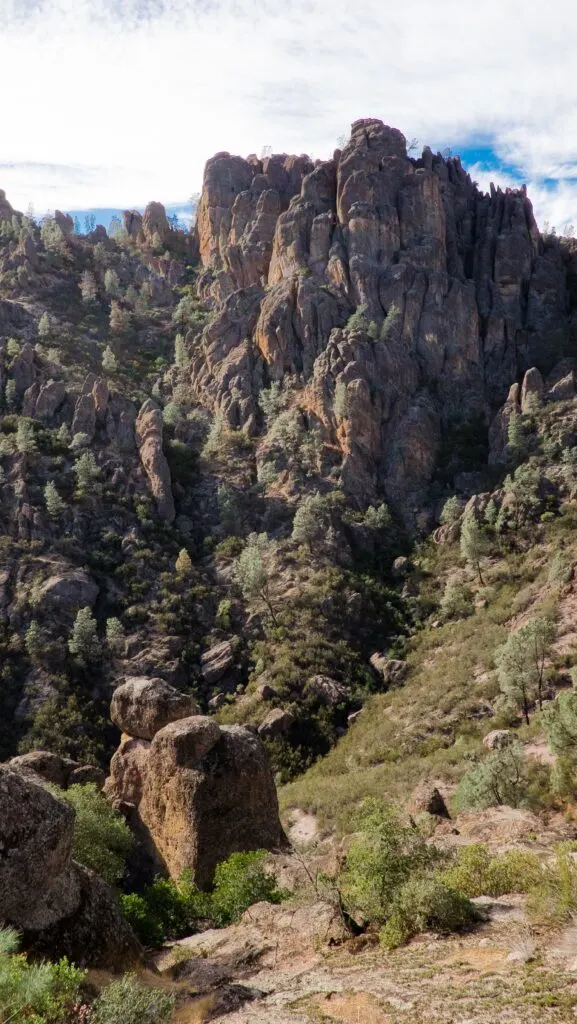
One of the most popular activities at Pinnacles National Park is hiking. The park offers a variety of trails that range in difficulty, so whether you're a seasoned hiker or a beginner, you're sure to find a trail that suits your skill level. Some of the park's most popular hikes include the High Peaks Trail, which offers stunning views of the surrounding landscape, and the Balconies Cave Trail, which takes you through a series of caves and rock formations.
If you're interested in wildlife, Pinnacles National Park is also a great destination. In addition to the California condor, the park is home to a variety of other bird species, as well as mammals like coyotes, bobcats, and bats. Whether you're interested in hiking, birdwatching, or just taking in the natural beauty of the park, Pinnacles National Park is definitely worth a visit.
Pinnacles National Park: A Guide to Hiking and Wildlife Watching
History and Geology
Pinnacles National Park has a rich history and geology that make it a unique destination for visitors. The park was originally established as a national monument in 1908 by President Theodore Roosevelt and was redesignated as a national park in 2013. The park is located in central California, east of the Salinas Valley and southeast of San Jose.
Volcanic Origins
The Pinnacles Rocks are believed to be part of the Pinnacles-Neenach Volcanic Field that occurred 23 million years ago near present-day Lancaster, California, some 195 miles (314 km) southeast. The volcanic activity that formed the park's landscape was the result of the movement of the Pacific Plate along the San Andreas Fault. The magma that was the source of all the volcanics was rhyolitic in origin.
Erosion and Rock Formations
Over millions of years, erosion and tectonic activity have shaped the landscape of Pinnacles National Park. The volcanic formations were eroded by wind and water, creating unique rock formations, caves, and spires. The park's signature rock formations, the High Peaks, were formed by the erosion of softer rock layers, leaving behind the more resistant volcanic rock.
The park's landscape is also home to a diverse range of flora and fauna, including the iconic California Condor. The park's unique geology and landscape make it a popular destination for hiking, rock climbing, and wildlife viewing.
In conclusion, the history and geology of Pinnacles National Park are fascinating and offer visitors a unique glimpse into the natural history of the region. Whether you are interested in the park's volcanic origins or its diverse flora and fauna, Pinnacles National Park is a must-visit destination for anyone interested in the natural world.

Flora and Fauna
Pinnacles National Park boasts a diverse range of flora and fauna, making it a haven for nature lovers. The park's unique location and climate have allowed for a wide variety of plant and animal species to thrive. Here are some of the notable flora and fauna you can expect to see during your visit.
Chaparral Vegetation
The park's landscape is dominated by chaparral vegetation, which is a type of shrubland that is common in California. Chaparral vegetation is characterized by its drought-resistant and fire-adapted plants, such as manzanita, chamise, and ceanothus. These plants have adapted to the hot, dry summers and the frequent wildfires that occur in the area.
In addition to chaparral vegetation, the park is also home to a variety of wildflowers that bloom throughout the year. The park's diverse plant life provides food and shelter for the park's wildlife.
Wildlife Diversity
Pinnacles National Park is home to a wide variety of wildlife, including the endangered California condor. The California condor is one of the largest birds in North America and can be seen soaring high above the park's rugged terrain. The park is also home to the golden eagle, which is another impressive bird of prey that can be spotted in the park's skies.
The park's streams and wetlands are home to the red-legged frog, which is a threatened species in California. The park's diverse habitats also provide a home for a variety of mammals, such as the bobcat, coyote, and mountain lion.
Overall, Pinnacles National Park's diverse flora and fauna make it a must-visit destination for nature enthusiasts. Whether you're interested in birdwatching, hiking, or just enjoying the park's natural beauty, there's something for everyone to enjoy.
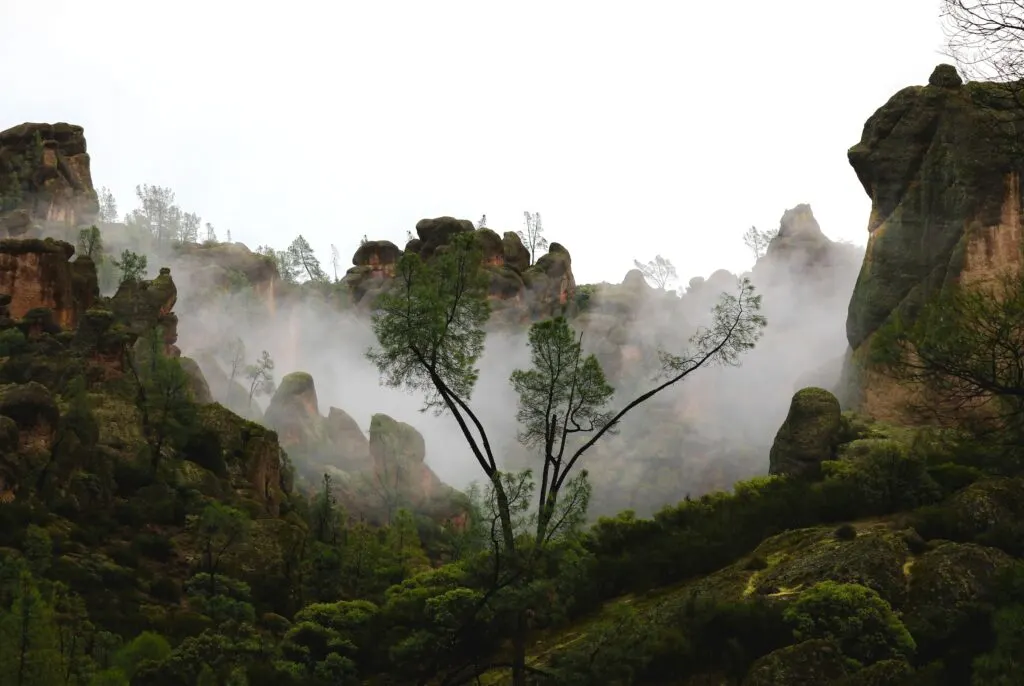
Hiking and Trails
Pinnacles National Park is a hiker's paradise with more than 30 miles of trails that showcase the beauty of the park up close and personal. The park has a variety of trails ranging from flat stretches of grasslands to uphill climbs through talus caves, and onward to the rocky spires that Pinnacles is famous for.
High Peaks Trail
If you are looking for a challenging hike with stunning views, the High Peaks Trail is a must-do. This trail is a strenuous 5.3-mile round trip with an elevation gain of 1,300 feet. The trail takes you through narrow canyons, up steep staircases, and across narrow ledges. The reward for your effort is breathtaking views of the surrounding landscape.
Talus Caves Exploration
The Talus Caves Exploration is another unique hiking experience in Pinnacles National Park. The caves were formed by large boulders falling into narrow canyons and creating a roof overhead. Hiking through the caves requires some scrambling over boulders, but it is a fun and exciting adventure. The Bear Gulch Cave and Balconies Cave are two of the most popular caves to explore.
When hiking in Pinnacles National Park, it's essential to wear sturdy shoes and bring plenty of water. Some of the trails can be steep and challenging, so it's important to be prepared. Additionally, stay on the designated trails to protect the park's fragile ecosystem.
Other popular trails in Pinnacles National Park include the Moses Spring Trail, Rim Trail Loop, and Balconies Trail. Each trail offers a unique perspective of the park's diverse landscape. Whether you're a seasoned hiker or a beginner, Pinnacles National Park has a trail that will suit your needs.
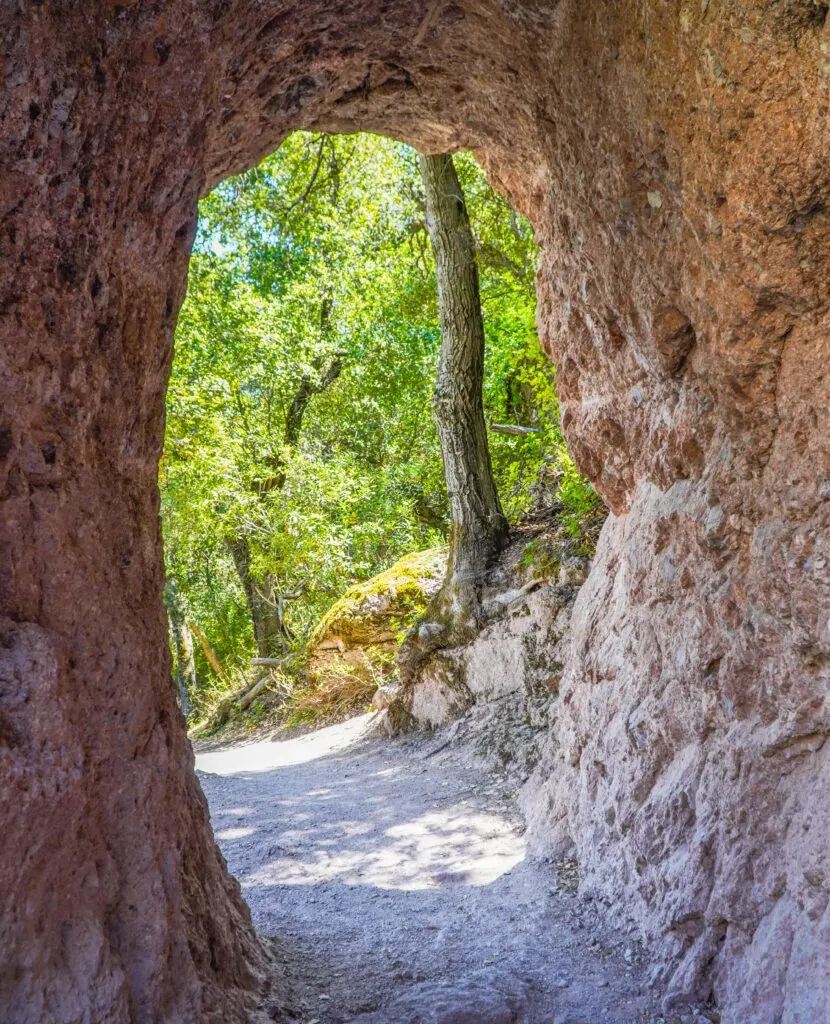
Visitor Experience
Camping and Accommodations
If you're planning to stay overnight at Pinnacles National Park, there are several options available. The park has a campground called Pinnacles Campground, which has 134 sites for tents and RVs. The campground is open year-round and reservations are recommended, especially during peak season. The campground has restrooms, showers, and a camp store where you can buy firewood and other supplies. There are also picnic tables and fire rings at each site, so you can cook your own meals.
If you prefer more luxurious accommodations, there are several hotels and lodges located near the park. Check out this website for a list of nearby options.
Park Activities
Pinnacles National Park has a lot to offer in terms of activities. The park is known for its hiking trails, which range from easy to strenuous. Some of the popular trails include the Bear Gulch Trail, the High Peaks Trail, and the Balconies Cliffs Trail. These trails offer stunning views of the park's rock formations and wildlife.
If you're into rock climbing, Pinnacles National Park has more than 30 miles of climbing routes, ranging from beginner to advanced. You can rent climbing gear from the park's visitor center or bring your own.
In addition to hiking and rock climbing, the park also has several picnic areas where you can enjoy a meal with friends and family. Some of the picnic areas have tables and grills, while others have shade structures and benches.
If you're looking to cool off on a hot day, the park has a swimming pool that is open during the summer months. The pool is located near the campground and is free for campers to use.
Overall, Pinnacles National Park offers a variety of activities for visitors of all ages and interests. Whether you're looking to hike, rock climb, picnic, or swim, there's something for everyone to enjoy.
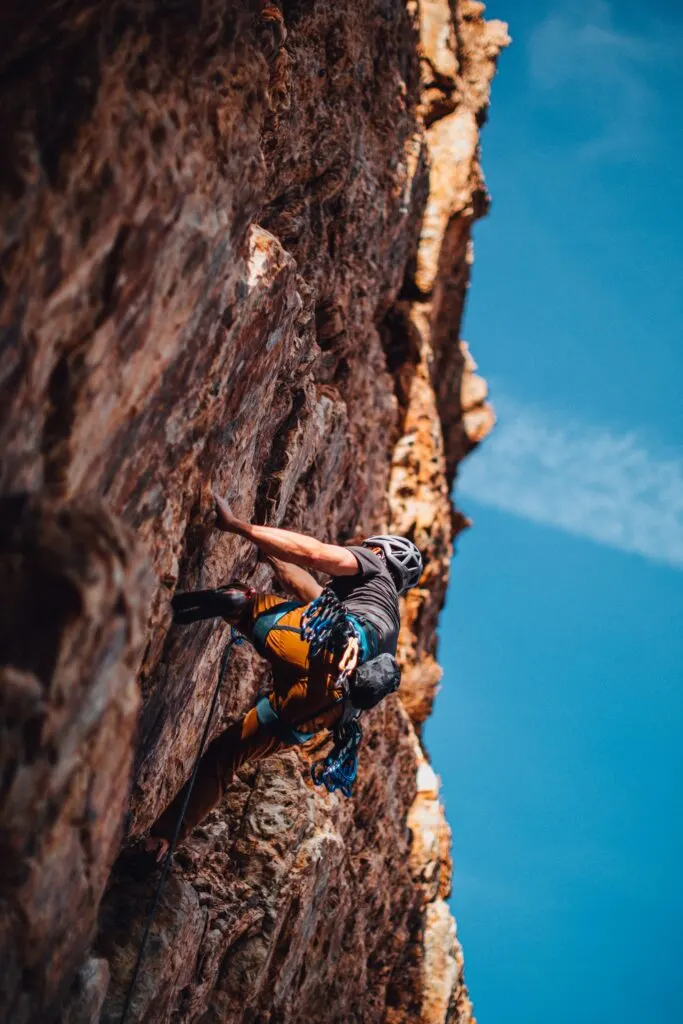
Conservation Efforts
Pinnacles National Park is home to a variety of wildlife, including the endangered California condor. The park has implemented several conservation efforts to protect these animals and preserve the natural beauty of the park.
California Condor Recovery
The California condor is one of the most endangered birds in the world, with only a few dozen left in the wild in the 1980s. Pinnacles National Park has been actively involved in the recovery of the California condor, with a program that began in 2003. The program involves the release of captive-bred California condors into the wild, as well as monitoring the birds to ensure their survival.
The program has been successful, with the number of California condors in the wild increasing steadily over the years. As of 2024, there are over 400 California condors in the wild, with more than 20 of them living in Pinnacles National Park.
Natural Preservation
In addition to the California condor recovery program, Pinnacles National Park has also implemented several other conservation efforts to preserve the natural environment of the park. These efforts include:
- Habitat restoration: The park has restored several habitats that were damaged by human activity or natural disasters, such as wildfires.
- Invasive species management: The park has implemented a program to manage invasive species that can harm the native wildlife and plant species in the park.
- Wildlife monitoring: The park regularly monitors the wildlife in the park to ensure their populations are healthy and to identify any potential threats.
- Climate change adaptation: Pinnacles National Park is taking steps to adapt to the effects of climate change, such as rising temperatures and changing weather patterns.
These conservation efforts are crucial to the continued survival of the wildlife and natural beauty of Pinnacles National Park. The National Park Service is committed to protecting and preserving this unique and important ecosystem for future generations.
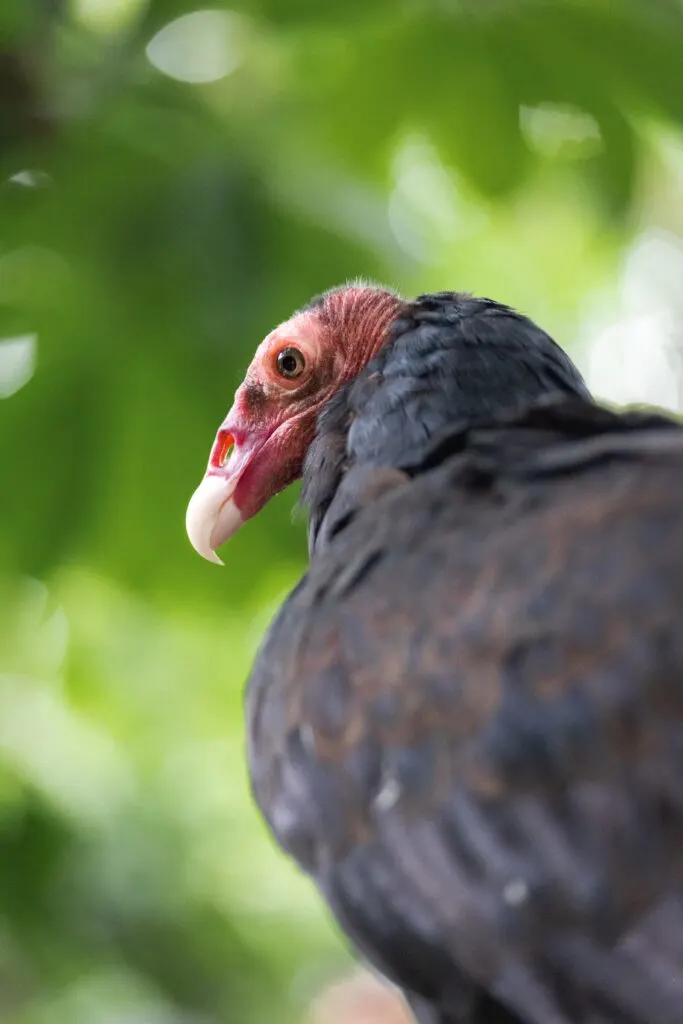
Seasonal Information
When planning a visit to Pinnacles National Park, it's important to consider the seasonal differences in weather and conditions. Here is some information to help you plan your trip.
Spring and Fall Visits
Spring and fall are great times to visit Pinnacles National Park. The temperatures are mild, ranging from the mid-50s to mid-70s Fahrenheit. The park is also less crowded during these seasons, making it a great time to enjoy the trails and wildlife. However, keep in mind that spring can be wet and muddy, so be sure to bring appropriate footwear.
Summer and Winter Conditions
Summer can be hot and dry, with temperatures ranging from the mid-80s to mid-90s Fahrenheit. Be sure to bring plenty of water and sunscreen if you plan to visit during this time. The park is also more crowded during the summer months, so plan accordingly.
Winter can be cool and wet, with temperatures ranging from the mid-40s to mid-60s Fahrenheit. While snow is rare in the park, it can occur at higher elevations. Be sure to check the weather forecast before your trip and bring appropriate clothing and footwear.
Overall, any time of year can be a great time to visit Pinnacles National Park. Just be sure to plan accordingly and check the weather forecast before your trip.
Park Amenities
Pinnacles National Park offers several amenities to make your visit comfortable and enjoyable. Here are some of the amenities available at the park:
Visitor Centers
The park has two visitor centers: the Pinnacles Visitor Center and the Chaparral Visitor Center. The Pinnacles Visitor Center is located near the east entrance of the park and is open year-round. It offers a variety of services, including park information, exhibits, and a bookstore. The Chaparral Visitor Center is located near the west entrance of the park and is open on weekends and holidays from late spring to early fall. It offers limited services, including park information and exhibits.
Camping Facilities
Pinnacles National Park offers two campgrounds: the Pinnacles Campground and the Group Campground. The Pinnacles Campground is located near the east entrance of the park and offers both tent and RV camping. The campground has restrooms, showers, and a store. Each campsite has a picnic table and a fire ring. The Group Campground is located near the west entrance of the park and is available for groups of 9 to 40 people. The campground has restrooms and picnic tables, but no showers or store.
Overall, Pinnacles National Park offers a variety of amenities to make your visit comfortable and enjoyable. Whether you are looking for park information, camping facilities, or just a place to relax, the park has something for everyone.
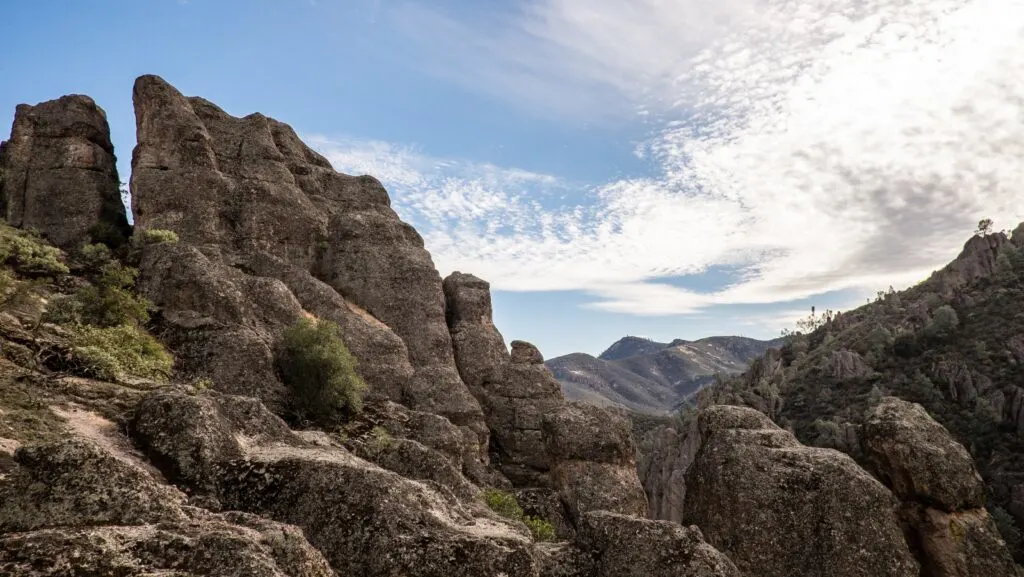
Related Post:
- Enjoy Free Admission to National Parks on National Parks Day 2024
- National Parks in Northern California: Must-See Natural Wonders
Access and Transportation
Getting to Pinnacles
Pinnacles National Park is located in central California and can be accessed by car. If you are driving from Los Angeles, take the 101 north towards Salinas and then take highway 146 east to the park. If you are coming from San Francisco, take the 101 south to highway 25 south and then take highway 146 west to the park. The drive from either city takes approximately 2.5 hours.
If you are flying into the area, the closest major airport is San Francisco International Airport (SFO). From there, you can rent a car and drive to the park. The drive from the airport takes approximately 2.5 hours. Alternatively, you can fly into the Monterey Regional Airport (MRY) and drive to the park from there. The drive from the airport takes approximately 1.5 hours.
Park Entrances
There are two entrances to Pinnacles National Park: the east entrance and the west entrance. The east entrance is located on the eastern side of the park and is accessed via highway 25. The west entrance is located on the western side of the park and is accessed via highway 146.
If you are driving from Soledad, take highway 146 east to the park's east entrance. If you are driving from Hollister, take highway 25 south to the park's east entrance. If you are driving from Salinas, take highway 101 south to highway 146 east and then take the road to the park's west entrance.
Note that the road to the park's west entrance is a windy, one-lane road that is not recommended for RVs, trailers, or large vehicles. If you are driving a large vehicle, it is recommended that you enter the park via the east entrance.
Once you arrive at the park, there are parking areas available at both entrances. The parking areas have marked handicap spaces convenient to facilities.
Outdoor Activities
If you are an outdoor enthusiast, Pinnacles National Park has a lot to offer. From rock climbing to bird watching, there is something for everyone.
Rock Climbing and Bouldering
Pinnacles is a popular destination for rock climbers. The park has over 30 miles of climbing routes, ranging from easy to difficult. The rock formations in the park are unique and offer a variety of challenges for climbers of all skill levels. If you are new to climbing, there are several guided tours and classes available to get you started.
Bouldering is also a popular activity in the park. There are several areas designated for bouldering, including the Balconies and the High Peaks. The park has a guidebook available for purchase that includes detailed information on the bouldering routes.
Bird Watching and Wildlife Viewing
Pinnacles National Park is home to a variety of wildlife, including the endangered California condor and the golden eagle. The park has several designated bird watching areas, including the Bear Gulch Reservoir and the Chaparral Trail. The best time to see the condors is in the morning and evening when they are most active.
In addition to birds, the park is home to a variety of other wildlife, including coyotes, bobcats, and mountain lions. If you are lucky, you may even spot a California red-legged frog or a western pond turtle. Remember to keep a safe distance from all wildlife and never feed them.
Overall, Pinnacles National Park is a great destination for outdoor enthusiasts. Whether you are a rock climber or a bird watcher, there is something for everyone to enjoy.
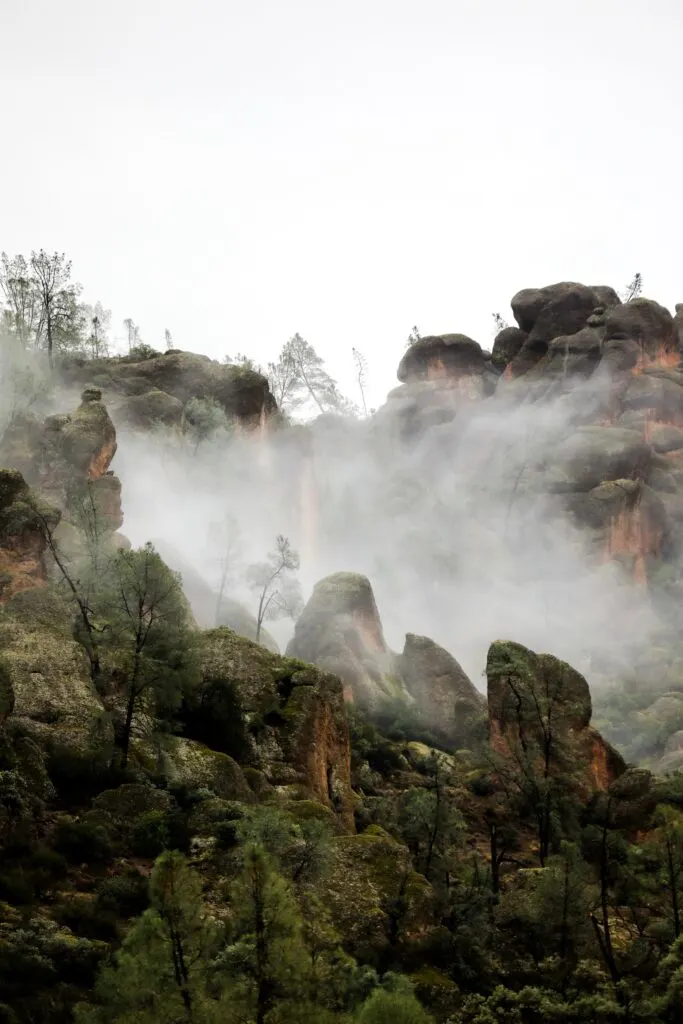
Planning Your Visit
If you're planning a trip to Pinnacles National Park, there are a few things you should keep in mind to ensure you have a safe and enjoyable visit. Here are some tips to help you plan your trip.
What to Bring
When visiting Pinnacles National Park, it's important to come prepared. Here are some items you should consider bringing:
- Hat: The sun can be intense, especially during the summer months, so it's a good idea to bring a hat to protect your head and face.
- Sunscreen: Along with a hat, you should also bring sunscreen to protect your skin from the sun's harmful rays.
- Flashlight or headlamp: If you plan on hiking or camping overnight, you'll need a flashlight or headlamp to navigate the park after dark.
- Traction devices: If you plan on hiking during the winter months, you may need traction devices such as crampons or microspikes to help you navigate icy trails.
- Water: It's important to stay hydrated while exploring the park, so be sure to bring plenty of water with you.
Safety and Regulations
To ensure your safety and the safety of others, it's important to follow the park's regulations. Here are some things to keep in mind:
- Stay on designated trails: To protect the park's fragile ecosystem, it's important to stay on designated trails and not venture off into areas that are closed or restricted.
- Respect wildlife: Pinnacles National Park is home to a variety of wildlife, including bears, mountain lions, and rattlesnakes. It's important to keep a safe distance from wildlife and not disturb their natural habitat.
- Pack out your trash: To help keep the park clean and protect wildlife, be sure to pack out all of your trash and dispose of it properly.
- Bear Gulch Reservoir and Bear Gulch Cave Trail: These are popular attractions in the park. However, the cave trail can be strenuous and requires a permit, and the reservoir is only open during certain times of the year. Be sure to check the park's website for more information before visiting these areas.
By following these tips and regulations, you can help ensure that you have a safe and enjoyable visit to Pinnacles National Park.
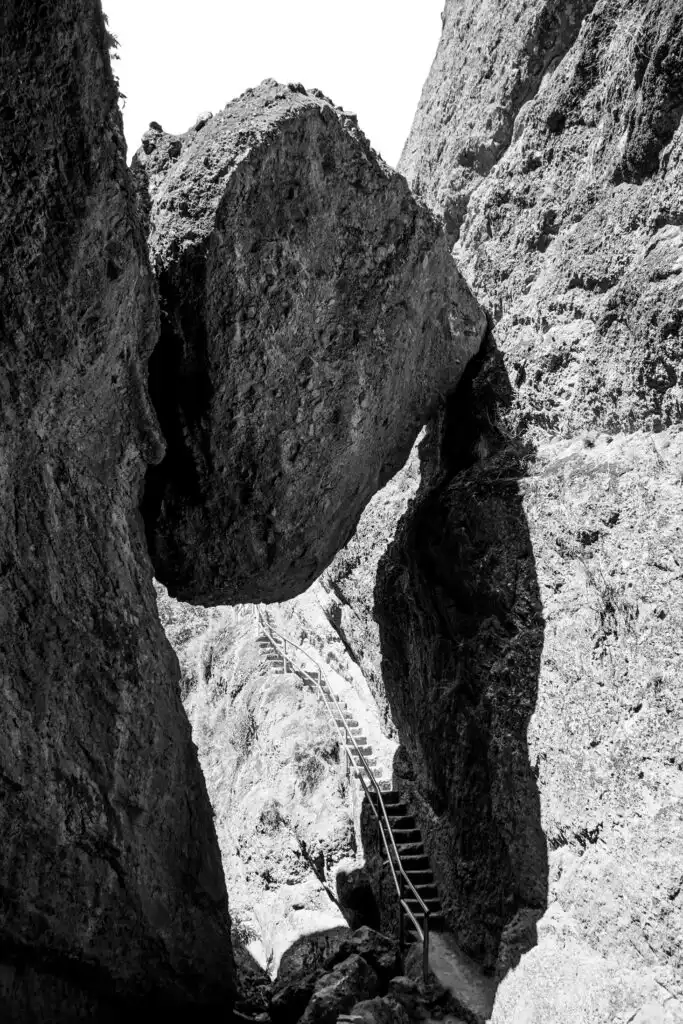
Frequently Asked Questions
What activities can visitors enjoy within the park?
Pinnacles National Park offers a variety of outdoor activities including hiking, rock climbing, bird watching, stargazing, and wildlife viewing. The park is also home to several caves, which are open to the public for exploration. Visitors can also attend ranger-led programs and guided hikes to learn more about the park's flora and fauna.
What are the camping options available and how do you reserve a spot?
There are two campgrounds within the park: Pinnacles Campground and the more primitive, tent-only, and first-come-first-served campground at the Chaparral area. Reservations can be made up to six months in advance through recreation.gov.
Which trails offer the best hiking experiences for different skill levels?
Pinnacles National Park has over 30 miles of trails ranging from easy nature walks to challenging hikes. The High Peaks Trail is a popular and challenging hike that offers stunning views of the park's rock formations. The Balconies Cave Trail is another popular trail that leads to a cave system. For easier hikes, the Bench Trail and the Moses Spring Trail are great options.
How does the weather vary throughout the year?
Pinnacles National Park experiences a Mediterranean climate with hot, dry summers and cool, wet winters. Temperatures can range from the 40s to the 90s Fahrenheit. The best time to visit the park is in the spring when the wildflowers are in bloom, or in the fall when the temperatures are cooler.
What are the park's operating hours and entrance fees?
Pinnacles National Park is open 24 hours a day, 365 days a year. Entrance fees are $35 per vehicle, $30 per motorcycle, and $20 per person for those entering on foot or bicycle. Annual passes are also available for $80.
What wildlife and natural formations are unique to the park?
Pinnacles National Park is home to over 400 species of bees, 14 species of bats, and several rare and endangered species such as the California condor and the red-legged frog. The park's rock formations, including the Balconies and the High Peaks, are unique and offer stunning views. The park's caves are also home to several species of bats and other wildlife.
